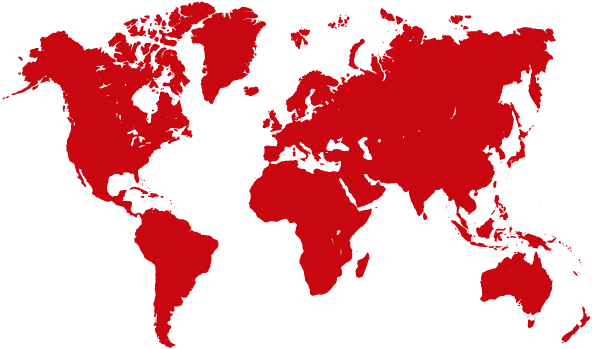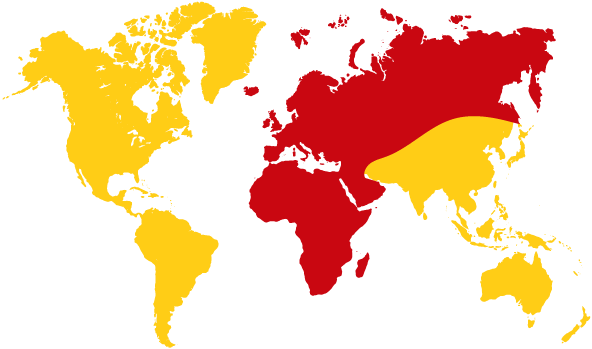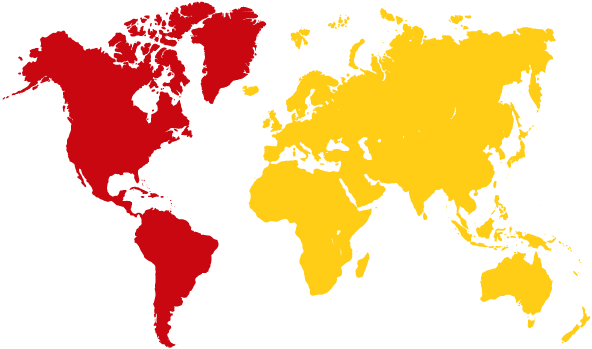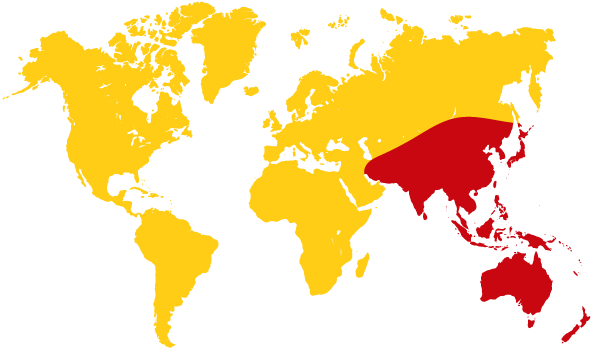SUPPORT OF THE AMATEUR RADIO SERVICE IN REGION 3
(STARS ***) – DESCRIPTION AND OBJECTIVES
INTRODUCTION
This document describes the work to promote and develop amateur radio in IARU Region 3.
The “Task Force” for this work is called the “Support of the Amateur Radio Service” (STARS) in Region 3. Their short reference title is “STARS ***” Task Force (sometimes written as STARS 3).
Details are given of the:
- History
- Broad Goals and Objectives for STARS ***
- Recommended Methods of Working
- Background
- Range of “Development” categories
It is clear that progressing the development of amateur radio in Region 3 is vital, and that this task is not easy to achieve. There are many challenges and opportunities.
Annex – Detailed Information on Promotion and Development
More details and information are provided in the Annex about:
|
Range of challenges |
Physical and geographic constraints |
|
|
HISTORY
The development activities in each IARU Region were originally named the “Promotion of Amateur Radio in Developing Countries” (PADC) prior to 1993. However, “developing” was hard to clearly define and in many cases not a realistic name. In some situations it was counter-productive. The IARU Region 1 Conference in Belgium in September 1993 reviewed their experience. They proposed that their Working Group be renamed as the “Support of the Amateur Radio Service” (STARS) in Region 1. Their short reference title was “STARS *”.
Early leadership in Region 3 was provided by JARL with a plan for the “Promotion of Amateur Radio”. They provided a Convener, funding, organisation and kit sets etc. JARL is still strongly committed to this activity in 2013.
IARU Region 3 followed the Region 1 lead at our 9th Regional Conference in Singapore in September 1994. Based on a proposal from NZART, PADC was changed to “STARS ***”.
BROAD GOALS AND OBJECTIVES FOR STARS ***
The broad goals of STARS *** are to promote amateur radio and help it grow in IARU Region 3. This includes helping to establish and grow a National Society to provide local representation for their radio amateurs. This has to be long term and sustainable.
In the initial stages of development, a positive effect can be achieved by:
- Providing assistance to form and grow an IARU member society
- Helping to establish and developing key Radio Clubs and stations, often in collaboration with an established local group or institution
- Helping develop a close relationship with the Ministry or radio regulator
- Enabling the training of key administrators and regulators (with attendance at IARU “Amateur Radio Administration Courses” (ARAC))
- Helping establish initial training courses and examination systems that satisfy the licensing authority, and qualify a core group of local people as radio amateurs
The basic objectives defined for individual projects implemented by the STARS *** Task Force are that they need to be:
- Simple in concept
- Targeted to meet the needs
- Limited in scope at each stage
- Sustainable, by both IARU Region 3 and the recipients
- Locally based
- Involve the local IARU Region 3 Society
- Based on radio clubs or groups, more than relying on individuals
- Capable of being funded
RECOMMENDED METHODS OF WORKING
Some basic methods and processes are recommended to guide the way that the STARS *** Task Force progresses projects and carries out its work. Methods are needed to allow orderly and systematic progress.
The methods and processes are as follows:
- Review and confirm the Convenor of the STARS *** Task Force, Secretariat function and members of the group at each three yearly Regional Conference
- Actively seek and continuously collect information on promotion and “development” needs from Member Societies, the Directors and other people in Region 3. All reports and enquiries received should be acknowledged.
- Collect information on the capabilities, expertise and assistance that is available
- Maintain a database record of the needs and help provided, and distribute it to the Task Force group members
- Determine the “Development Category” A, B, C for each case of need (see later)
- Identify candidates/projects for assistance and the type of help and actions required
- Get agreement within the STARS *** Task Force on priorities and action needed
- Allow for long project time cycles and design for sustainability after the project ends
- Request the assistance needed from other Societies and seek a “foster” society to help
- Action each project in turn and track its project life cycle
- Report on progress to the Working Group members and the Directors at regular intervals (3 or 6 monthly)
- Provide a Summary Report on progress to each Triennial Region 3 Conference
- Collect and analyse feedback (success and failure) from projects to guide improvements
- Publicise the successes and benefits achieved, particularly in the Region 3 Newsletter
It was suggested that a simple database record system be set up, and a basic project sheet template and flow chart be used to guide each project.
BACKGROUND
Earlier work identified the main constraints to development in Region 3. The key challenges for many Societies are a lack of:
- Training courses, materials, instructors
- Local Examination systems that are accessible to those wanting to become radio amateurs
- Licensing systems (provided by the Regulator in a timely way)
- Radio equipment, sources of power, and antennas
- Help for people to gain operating skills and experience to get on the air
- Support from local authorities and a positive government environment
- Finance
RANGE OF “DEVELOPMENT” CATEGORIES
Three possible general stages of “development” have been previously identified and some broad strategies proposed for each one.
In summary they were:
- Category A — Countries where amateur radio is not permitted or where no licensed amateurs exist. The benefits of amateur radio need to be demonstrated to government and the authorities, permission to operate gained, and interested local people found. A Member Society has to be established. Continuous follow up is essential.
- Category B — Countries where operation is permitted but activity is low. A local amateur radio society may or may not exist. A society may need to be established and membership promoted. They usually need training assistance and equipment, help from a developed neighbour society, and assistance to promote amateur radio.
- Category C — Countries with developed societies but a lack of resources, especially for training, examinations and licensing (there may be government restrictions). Assistance is required with training materials, guidelines, and help from a foster society. Help will probably be needed to encourage young entrants (e.g. with novice licences or similar).
Each situation needs to be examined individually and a specific solution found.
ANNEX – DETAILED INFORMATION ON PROMOTION AND DEVELOPMENT
This Annex contains detailed information about various aspects and issues that affect and influence promotion and “development” of Amateur radio in IARU Region 3.
There are many challenges and opportunities. It is clear that many tasks are not easy to achieve.
Range of Challenges
Three possible general stages of “development” were identified above and given a Category A, B or C description. Some broad strategies were proposed for each one.
A very wide range of challenges can be identified. A “blanket” approach is not possible. Each situation needs to be examined individually; on a country by country basis. Account needs to be taken of government attitudes, local laws, culture, past events and any history of amateur radio etc. Specific solutions are needed in each case. Many factors affect the “development” of amateur radio.
“Developing Country” Definitions
While “developing country” is now not used in the title of the activities of STARS ***, some background information is helpful. In some situations “developing country” has been found to a counter-productive name. However, in other situations a definition is needed to focus attention and help define needs and solutions.
The various criteria generally used to define “developing” are based Gross Domestic Product (GDP), disposable incomes or some other recognized economic indicator. UNESCO produces such lists. For amateur radio to be sustained, as a minimum it would be expected that there is a small, permanent population, with some economic development and infrastructure. Average annual incomes would typically be in the range US$500 — $5,000. At the lowest end of the range would be small island groups and nations. They may have only a subsistence population, and little reasonable hope for amateur radio activity other than by visitors or expatriates.
Organizational Restraints
In many countries there are no barriers to amateur radio. Government radio regulations include the authorization, examination and the issue of amateur licences and call signs. At official levels the value of amateur radio to the nation is understood and encouraged.
In other countries there may be only limited interest at official levels in the aims and objects of amateur radio. Licensing systems may exist for the local people, but can be difficult to access. Local call signs may be issued. Licenses and call signs may also be issued to visitors or expatriates based on an operator’s certificate issued elsewhere.
In a very few countries amateur radio is still forbidden. Special measures are needed before amateur radio can start to develop.
The biggest problem in some countries is usually the total lack of any examination process and other systems to allow them to become qualified and get a local licence. This is an area where other countries and their member societies, IARU Region 3 (via STARS ***) and the IARU can help.
Prior to passing any examination, there is a need for training in the technical, operational and regulatory aspects of amateur radio. Basic education within the country, especially trade training in electronics, may not be readily available. Adequate training courses take significant time and resources. Help is needed.
“Education” of a wide group of people is also often needed – including government officials, the licensing authority, telecommunications network operators, education providers etc. The IARU has done much valuable work in this area. They can provide an “Amateur Radio Administration Course” (ARAC) specifically targeted at training and educating Ministry officials and regulators. A critical requirement is to identify a “friendly” administration to host such courses. ARAC courses have been run in all Regions for more than 30 years. They have had a significant impact. IARU Region 3 coordinates requests for ARAC’s in our Region.
Many countries have developed from earlier colonies, trust territories and protectorates of Britain, the US and European countries. There may be traditional links and continuing aid coming from these countries. These historical links are logical channels for seeking help for the development of amateur radio. These links need to be developed and the concept of a “foster society” pursued where possible. However, the provision of assistance from a remote donor country (perhaps without much previous experience), even if well intentioned, can be difficult and frustrating. Some recipient countries may be sensitive to some donor or aid countries, due to earlier history or political events. This needs to be recognized in advance.
Social Restraints
An obvious problem is the lack of money available to individuals, especially disposable cash income. There may be few jobs and levels of employment as low as 10%. The concept of an “extended family” is often widely practiced. The family unit can embrace a whole village and include others living in capital cities or even overseas. Many young family members in employment send remittance payments back to their family to support them. Extended families can also be taken further to include property and land being “community owned”. There is little private and personal ownership of goods and assets. Few people also have personal or private space in their houses that is secure to allow ownership of radio equipment.
In these situations, ownership of personal transceivers is very difficult for many people. “Club stations” can be a more realistic first step that matches the social structure. The risk is that no one person may be responsible for any of the equipment. Maintenance and security are challenges.
Human Resources
Populations may be small and scattered. There may also be language barriers with local dialects. English (or another European language) although taught, is often not the first or only language used. The people are often shy and differences in culture cause them to be reserved with foreigners. Developments will take time and trust needs to be developed. A flexible approach is needed. A lack of education and training in technical subjects is a challenge.
The time needed to complete a project is often under-estimated. Most successful “aid” projects have been the result of individual and group effort, with clear objectives. Innovation will be needed. Some successful projects will be a mix of local and expatriate effort, sometimes started by accident. Dependence on only a few individuals can be high risk.
Some preliminary “selling” of the benefits of amateur radio and a project may be necessary.
Training
A lack of “technical” and other types of training is already recognized as a constraint to the growth of amateur radio (and developing an “advanced” economy). The needs for training have to be specifically identified for any project to succeed.
Training is clearly needed prior to passing an examination – often just sufficient to pass. More help is needed afterwards to get on the air, gain confidence and experience. As well as basic training materials and aids, instructors and facilities are also needed. An organization is needed to manage the processes and trainees. Any existing trade training or educational establishment can provide the basis for amateur radio training and should not be overlooked.
Resources and Materials
Training resources and materials are necessary. They have to cover the range of courses proposed, documentation, handbooks, training books, magazines and other obvious “library” items. Typical examination “Questions and Answers” guides and basic radio training manuals are needed. More advanced items may include correspondence courses, audio and video tapes and disks, demonstration materials and kit sets etc. The range of materials has to cover from the licence examination, through to getting an operational station working.
Human resources – instructors and trainers are needed. Physical space at a club rooms or training facility are also necessary. A working amateur radio station with a transceiver and antenna is a good motivation, and valuable for demonstrations.
DXpeditions are sometimes seen as a resource. While they have high levels of publicity at the time, they often result in few long term benefits to the local Society or amateurs. Any “development” goals or activities need to be “designed into” the DXpedition from the outset.
Physical and Geographic Constraints
In the Asia – Pacific area covered by IARU Region 3 there is a huge diversity of geography and demography. The Asiatic land mass population densities range from very high city densities to very low rural numbers. There are large extremes of climate. Many races and languages are evident. Major countries in terms of size, population and economies include China, India, Japan, Korea, Indonesia, and the Philippines. South-East Asia includes some very large island groups and populations, down to smaller islands.
In the Pacific area, the North and South Pacific Oceans together are over twice the size of either the Indian or Atlantic Oceans. The Pacific covers 32% of the world’s surface. However, less than 0.5% of the world’s population lives in Australasia, with only a small fraction living in the Pacific Islands. The islands fall into three ethnic groups: Micronesia, Melanesia and Polynesia. Most are clustered in the North, West and South Pacific. There are not many islands in the Eastern Pacific. Distances are huge and the commercial telecommunications and airline services are often not well developed. Most of the large and more developed countries are around the rim of the Pacific – New Zealand, Australia, Japan, China, Russia, the West coasts of Canada and the USA. Central and South American countries also border the Pacific; but have few nearby island neighbours. They do not have good transport links to their west and are not well placed to help development.
In Europe, Africa, the Americas and the Middle East a similar wide range of diversity exists.
Infrastructure Limitations
There are many limitations on the supporting infrastructure needed that enables a technical activity like amateur radio to grow. AC mains electric power is generally essential. In a developing economy this can be unreliable, not continuous, poorly regulated and expensive – and may not be available at all. The need for a source of power is second only to the need for radio equipment. Solar or wind power is more complex and expensive, but may be more practical in some locations.
A harsh climate, while liveable for human survival, is often hard on equipment, antennas, books and accessories. Most inhabited areas on sea coasts have salt laden winds, high rainfall and high humidity. Dust and coral sand cause damage and intermittent faults. At the extreme in some Pacific Islands the climate is generally so warm that the houses do not have any walls and rely on sea breezes for natural cooling. This accelerates corrosion and provides no physical security. Many other physical constraints limit the development of amateur radio.
Funding
The lack of funds is also a limiting factor. Money is needed to progress promotion and development proposals. International organizations (the UN, ITU, World Bank, large sponsors), and regional sources (the Asian Development Bank, APT, governments) are possible sources of funding. However, they are often focused on very large projects, especially multi-country or regional ones. More realistically, national and local funds plus local commercial sponsorships may need to be pursued. IARU Region 3 can provide some modest funding.
However, if well researched and presented proposals are developed, their merit will often attract funding assistance. Collecting money for non-specific or general projects is usually not productive.
If funds are sent directly to the society of country being assisted, it is essential to identify and appoint a responsible local person to administer the money or aid. That person needs to be the nominated point of contact. If significant sums are involved an audit process should be established.
Equipment
Some previous efforts have initially focused on trying to obtain or develop suitable HF band transceivers. However, it is probable that a simpler entry point is to use VHF and UHF equipment. Low power hand held transceivers and DC powered mobile/desk radios are now readily available and costs have reduced. They can be used for local communications on repeaters and on simplex channels. A local “community” of radio amateurs can be built up quickly, supporting and helping each other. Community service and emergency communications aims can be met.
The ideal equipment specification for an entry level HF transceiver has been the subject of discussion for a long time. Some limits have to be set. If it is too “basic” with inadequate performance, many operators (even new ones) will not want it. Very complex transceivers are hard for new operators to understand, and expensive.
The essential needs are in summary that equipment has to be – easy to operate, reliable, capable of SSB and CW operation; have moderate RF power output (25 – 100 watts), moderate power consumption and reasonable cost. Ideally the transceiver should be rugged and “tropicalised”; but this is expensive. Some of the needs contradict one another. Cost is a major factor. This can only be driven down by mass production (with quantities in the thousands). These factors point to the equipment being based on an existing model or design. Regional or global manufacture is likely. In all cases the display system, operating system and handbooks and manuals etc. need to be available in English to allow widespread deployment and sales.
The use of low power (QRP) is generally not considered to be practical for beginner operators, remote from population centres and help. Kit sets are often also not suitable, easy to get, or to construct successfully. Frustration from failure to make contacts or get equipment operating can kill enthusiasm quickly.
In a developing country there are often few spare parts or components, test instruments or technical people available to help when problems arise. There is also little used or surplus equipment for sale. New equipment is expensive and it can be hard to get permission to import it. Other items such as accessories, books and magazines can be difficult to get.
Antennas
Suitable antennas can also be a challenge. However, solutions are potentially easier to find. Simplicity is important. Simple dipoles (or multi-band or trap dipoles) can be made with coaxial cable or window/ladder line feeders. Complete units can also be purchased. Rugged design and quality components, with attention to water proofing and corrosion resistance, are the keys for long life. These are not impossible goals. For a start up amateur station extensive use of aluminium tubing, all band or high gain antennas and elaborate support structures and towers are not essential.



